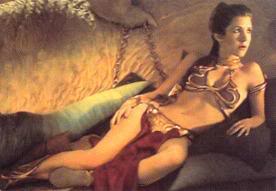
 |
Freethought & Rationalism ArchiveThe archives are read only. |
|
|
#21 |
|
Regular Member
Join Date: Jan 2008
Location: Myjava, Slovakia
Posts: 384
|
found few more:
Saint Goerge and Perseus Pope urging preachers to religious merging: http://englishheathenism.homestead.com/popesletter.html |
|
|
|
|
#22 | |
|
Regular Member
Join Date: Apr 2008
Location: Copenhagen, Denmark
Posts: 322
|
Quote:
 :huh: :grin: |
|
|
|
|
|
#23 |
|
Junior Member
Join Date: Jan 2008
Location: Buenos Aires, Argentina
Posts: 37
|
|
|
|
|
|
#24 | ||
|
Regular Member
Join Date: Jan 2008
Location: Myjava, Slovakia
Posts: 384
|
Quote:
I found this claim in a partly scholary book, and then when i looked up it on wikipedia, same claim was repeated: Quote:
|
||
|
|
|
|
#25 |
|
Veteran Member
Join Date: May 2002
Location: oz
Posts: 1,848
|
http://en.wikipedia.org/wiki/Mitre
This 'evolution' may need to be checked. The mitre: - "now known as the traditional, ceremonial head-dress of bishops and certain abbots in the Roman Catholic Church, the Anglican Communion, some Lutherans, and also bishops and certain other clergy in the Eastern Orthodox Church, Eastern Catholic Churches and the Oriental Orthodox Churches." -"Its use has possible precedents in the Phrygian mithraic sacrifice and the mitre-like headdress signifying enlightenment and received at a priests inauguration" [note 'possible'] -" "The tiara [from which the mitre originates] probably developed from the Phrygian cap, or frigium, a conical cap worn in the Greco-Roman world" |
|
|
|
|
#26 | |
|
Contributor
Join Date: Mar 2006
Location: Falls Creek, Oz.
Posts: 11,192
|
OK Vid, What about this list of three parts ? Quote:
Discussion of the sources listed above can be found at this page entitled The Early Christian Epigraphic Habit. Best wishes, Pete |
|
|
|
|
|
#27 |
|
Regular Member
Join Date: Jan 2008
Location: Myjava, Slovakia
Posts: 384
|
mountainman: After quick look, I don't see how that answer my question. Maybe you was being ironic under impression I am looking for info for some "constantine invented christianity" theory? That's not the case. I am simply looking for aspects of earlier pagan religions that were fused into christianity, I hope you agree there were such
 Still, it's a very interesting list, haven't seen your site so far. |
|
|
|
|
#28 | ||
|
Veteran Member
Join Date: Apr 2002
Location: N/A
Posts: 4,370
|
Quote:
 Quote:
Seriously, you've picked up some stuff which is nearly complete rubbish here. Not your fault, of course, but beware of such things online. All the best, Roger Pearse |
||
|
|
|
|
#29 | |
|
Contributor
Join Date: Mar 2006
Location: Falls Creek, Oz.
Posts: 11,192
|
Quote:
I am defending the argument that every single citation on the above list is either pagan or jewish. IMO every one of these citations, which have been represented by various scholars and academics of yesterday and today as being "christian" are in fact not christian at all. More in line with your question other pagan influences on christianity must include the following: * The Logos of Heraclitus via Philo * The Healing God Ascelpius via many pagans * The writer and sage Apollonius of Tyana (man of letters) * The Sybils. * The Pontifex Maximus * Porphyry's literary subject matter c.312-324 CE * Heroditus * The Gita (whoever wrote "The Acts of Peter and the 12 A's" references it) * The sayings of the Essenes and Therapeutae (via Philo) Best wishes, Pete |
|
|
|
|
|
#30 | ||
|
Veteran Member
Join Date: Sep 2004
Location: Birmingham UK
Posts: 4,876
|
Quote:
The earliest ascertainable versions of the story of St George are preposterous but with no dragon. Andrew Criddle |
||
|
|
| Thread Tools | Search this Thread |
|